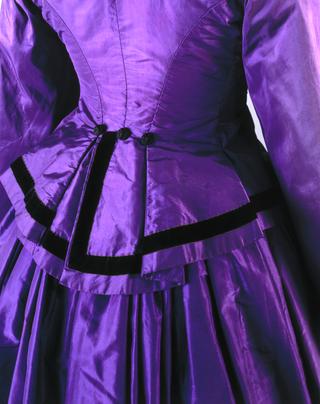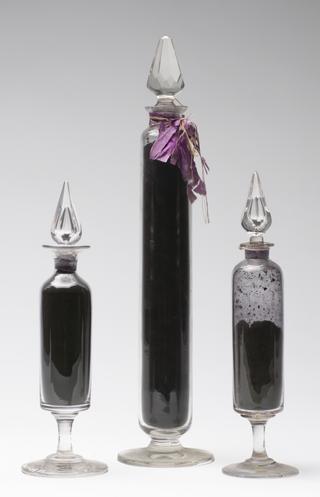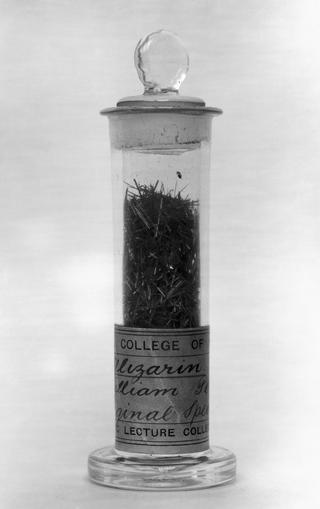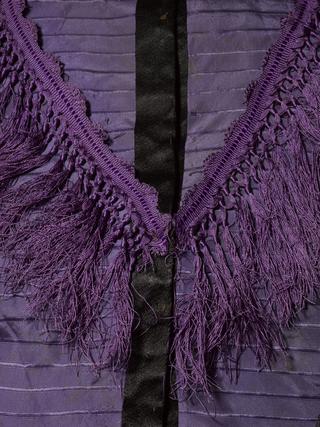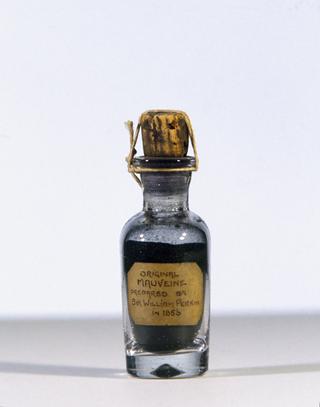
Sir William Henry Perkin 1838 - 1907
- occupation:
- Chemist
- Nationality:
- English; British
- born in:
- London, Greater London, England, United Kingdom
William Henry Perkin was born in 1838. His father was a builder and wanted his son to become an architect. However, when William was 12 years old, a friend showed him how soda and alum crystallise. This started his interest in science, which disappointed his father, who was concerned that this would not offer good career prospects.
At the age of 14 he began to attend the City of London School. The school was one of the first in England to teach chemistry as a practical subject. Perkin was taught chemistry and physics by Thomas Hall. He quickly made progress and was allowed to assist Hall in setting up experiments for lectures. Hall encouraged him in his interest and introduced him to August Wilhelm von Hofmann, who ran the Royal College of Chemistry.
Perkin enrolled at the Royal College when he was 16. The College later became the Royal College of Science and, in 1907, was one of the founding bodies of Imperial College.
At the age of 17, Perkin became Hofmann’s research assistant. Hofmann was keen to develop a synthetic form of quinine, an expensive natural extract that was in demand as a treatment for malaria. Perkin continued to work on this in a rudimentary laboratory at home during the evenings and at weekends. During the Easter vacation of 1856, Perkin was experimenting with aniline, a colourless aromatic oil derived from coal tar. While trying to oxidise aniline using potassium dichromate, Perkin made a black precipitate. He tried to remove the colour and found that the resulting solution would turn silk purple.
Perkin named the colour mauve and the dye mauveine. He decided to try to market his discovery instead of returning to college.
On 26 August 1856, the Patent Office granted Perkin a patent for 'a new colouring matter for dyeing with a lilac or purple colour stuffs of silk, cotton, wool, or other materials’.
Perkin's next step was to interest cloth dyers and printers in his discovery. He had no experience of the textile trade and little knowledge of large-scale chemical manufacture. He corresponded with Robert and John Pullar in Glasgow, who offered him support. Perkin's luck changed towards the end of 1857 when the Empress Eugénie, wife of Napoleon III, decided that mauve was the colour to wear. In January 1858 Queen Victoria followed suit, wearing mauve to her daughter’s wedding.
Perkin’s success was assured, as he was the only person in Britain who could produce the colour in any quantity. Perkin’s father and elder brother supported his venture. His father used his savings to build a factory at Greenford Green, near Harrow, Middlesex. By December 1857, Perkin and Sons began supplying mauve to silk dyers. Perkin went on to work on other aniline-based dyes, including a synthetic version of alizarin, a red dye extracted from the madder plant. His company continued to be successful. In 1874, at the age of only 36, Perkin sold the factory and retired from industry. He built on his reputation as a chemist, devoting his time to carrying out research at home.
In recognition of his contributions to science, Perkin was elected to the Royal Society in 1866 and knighted in 1906. His enterprise was important because it helped to establish the modern chemical industry. Many other companies were founded, encouraged by Perkin's success; they adopted his new methods of chemical synthesis on a large scale. While Perkin's own effort to produce a medical substance failed, work such as his was crucial for the establishment of the pharmaceutical industry.
